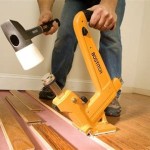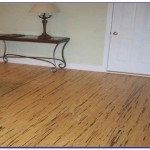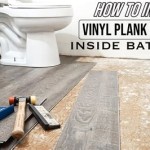Best Scratch and Water-Resistant Laminate Flooring: A Comprehensive Guide
Laminate flooring has become a popular choice for homeowners seeking a durable, aesthetically pleasing, and cost-effective alternative to hardwood or tile. Its layered construction offers a resilience that many other flooring types struggle to match, but some laminate floors are inherently better equipped to withstand the daily wear and tear of a busy household than others. The specific factors contributing to scratch and water resistance are crucial for homeowners to consider when making a selection.
This article provides a detailed exploration of the key features that define scratch and water-resistant laminate flooring, highlighting the characteristics that contribute to optimal performance in environments prone to spills and impacts. Understanding these aspects allows for informed decision-making, ensuring the chosen flooring solution meets both functional requirements and aesthetic preferences.
Understanding the Abrasion Class (AC) Rating
The Abrasion Class (AC) rating is a standardized measure of a laminate floor's resistance to abrasion, impact, and staining. It is a critical indicator of durability and is determined through rigorous testing adhering to European Norm (EN) 13329. The AC rating ranges from AC1 to AC5, with higher numbers indicating greater resistance to wear and tear. Selecting the appropriate AC rating is paramount to maximizing the lifespan and maintaining the appearance of laminate flooring.
AC1 rated laminate is generally intended for light residential use, such as bedrooms with minimal foot traffic. AC2 is suitable for moderate residential use, like living rooms or dining rooms. AC3 laminate is designed for heavy residential use and light commercial applications, making it a versatile choice for areas such as hallways, kitchens, and home offices. AC4 rated laminate is ideal for general commercial use, capable of withstanding the heavy foot traffic found in offices, boutiques, and cafes. Finally, AC5 laminate offers the highest level of durability and is suitable for heavy commercial use, often found in high-traffic areas such as department stores and public buildings.
For homeowners prioritizing scratch resistance, an AC4 or AC5 rating is preferable, particularly in homes with children, pets, or high foot traffic. While the initial cost may be slightly higher, the increased durability translates to a longer lifespan and reduced maintenance costs over time. Furthermore, a higher AC rating offers a greater peace of mind, knowing that the flooring is capable of withstanding the challenges of daily life without succumbing to unsightly scratches and blemishes.
It's important to note that the AC rating primarily indicates scratch resistance, and while some correlation exists between AC rating and water resistance, they are distinct characteristics. A high AC rating does not necessarily guarantee exceptional water resistance, and vice versa.
The Importance of a Water-Resistant Core
The core layer of laminate flooring is the structural foundation and significantly influences its water resistance. Traditional laminate flooring cores are typically made of High-Density Fiberboard (HDF) or Medium-Density Fiberboard (MDF). While HDF offers superior density and resistance to moisture compared to MDF, both materials are susceptible to water damage if exposed to prolonged moisture or standing water. When water penetrates the core, it can cause swelling, warping, and eventual delamination of the flooring.
To address this vulnerability, manufacturers have developed specialized water-resistant cores. These cores are often treated with water-repellent additives or constructed from materials inherently resistant to moisture absorption. Some advanced options include waterproof cores made from polymer composites or completely sealed HDF cores with enhanced edge sealing technology.
When evaluating water-resistant laminate flooring, it's crucial to understand the specific technology employed and the level of protection offered. Terms like "water-resistant," "water-repellent," and "waterproof" are often used interchangeably, but they represent varying degrees of protection. "Water-resistant" typically indicates that the flooring can withstand spills and splashes for a limited time, provided they are promptly cleaned up. "Water-repellent" suggests a higher degree of protection, with the surface actively resisting water penetration. "Waterproof," if legitimately applied, implies that the flooring can withstand prolonged exposure to water without damage.
The interlocking system of laminate flooring also plays a crucial role in water resistance. A tight, secure interlock minimizes the potential for water to seep between planks and reach the core. Look for flooring with precise milling and innovative locking mechanisms that create a watertight seal. Some manufacturers even incorporate sealant into the locking system to further enhance water resistance.
For environments prone to spills or high humidity, such as bathrooms, kitchens, and mudrooms, investing in laminate flooring with a truly waterproof core and a robust locking system is highly recommended. While these options may come at a premium, the added protection can prevent costly repairs and replacements in the long run.
Surface Texture and Embossing for Scratch Concealment
The surface texture and embossing of laminate flooring not only contribute to its aesthetic appeal but also play a significant role in concealing scratches and imperfections. Smooth, high-gloss surfaces tend to highlight scratches more readily, while textured or embossed surfaces can effectively camouflage minor blemishes.
Embossing refers to the process of creating a three-dimensional texture on the surface of the laminate, mimicking the grain patterns of natural wood or the texture of stone. There are several types of embossing, including registered embossing, which aligns the texture with the underlying printed design, resulting in a highly realistic appearance. Embossed-in-register (EIR) is generally considered the most authentic and visually appealing option, as it accurately replicates the tactile feel of natural materials.
Textured surfaces, whether achieved through embossing or other manufacturing techniques, provide a degree of visual distraction that helps to obscure scratches. The variations in height and depth on the surface create shadows and break up the light, making it more difficult to detect minor imperfections. This is particularly beneficial in high-traffic areas where the flooring is more susceptible to wear and tear.
Matte finishes are also effective at concealing scratches compared to glossy finishes. The absence of a highly reflective surface reduces the visibility of scratches and blemishes. Many modern laminate flooring options feature a combination of texture and matte finish to provide optimal scratch concealment and a natural, understated aesthetic.
When selecting laminate flooring, consider the type of embossing and finish in relation to the intended use and aesthetic preferences. If scratch concealment is a primary concern, opt for a textured or embossed surface with a matte finish. While smooth, glossy surfaces may offer a more contemporary look, they require more diligent maintenance to prevent the appearance of scratches.
Beyond the AC rating, core material, and surface texture, several other factors can contribute to the overall scratch and water resistance of laminate flooring. The thickness of the wear layer, the quality of the protective coating, and the proper installation of the flooring all play a role in its long-term performance.
A thicker wear layer provides greater protection against abrasion and impact, extending the lifespan of the flooring. The protective coating, typically made of melamine resin, acts as a barrier against scratches, stains, and moisture. High-quality coatings are more resistant to wear and tear and provide better protection than cheaper alternatives.
Proper installation is essential to ensuring the water resistance of laminate flooring. A level subfloor and a correctly installed moisture barrier can prevent water from seeping underneath the flooring and damaging the core. Following the manufacturer's instructions carefully and using the recommended tools and materials will ensure a proper installation and maximize the flooring's performance.
In conclusion, selecting the best scratch and water-resistant laminate flooring requires a comprehensive understanding of the factors that contribute to its durability and performance. By carefully considering the AC rating, core material, surface texture, wear layer thickness, protective coating, and installation methods, homeowners can make informed decisions and choose a flooring solution that meets their specific needs and preferences. Prioritizing these key aspects will ensure a long-lasting, aesthetically pleasing, and functional flooring solution that can withstand the rigors of daily life.

The Best Waterproof Flooring Options Inc

The Best Waterproof Flooring Options Inc

Waterproof Laminate Flooring Review Pros And Cons

6 Ideas For Waterproof Kitchen Flooring Lx Hausys

The Best Waterproof Flooring Options Inc

Best S Scratch Resistant Marble Effect Waterproof Wide Plank Laminate Flooring On China Building Material Made In Com

Best Engineered Hardwood Floor For Scratch Resistance Lifecore Flooring S

Best S Scratch Resistant Marble Effect Waterproof Wide Plank Laminate Flooring China Plastic Floor Pvc Made In Com

The Best Laminate Flooring Of 2024

Laminate Vs Vinyl Flooring Which Is The Best Option
Related Posts








